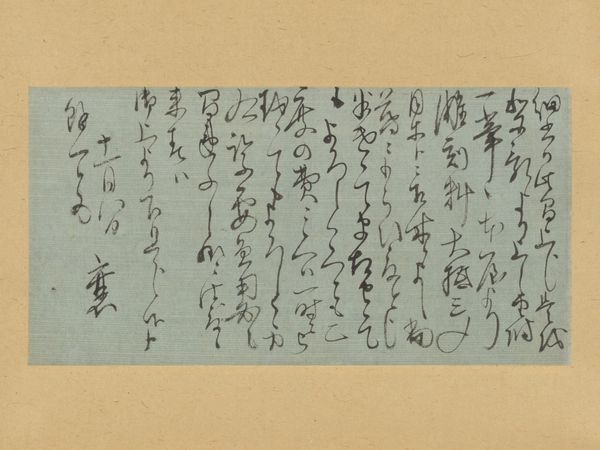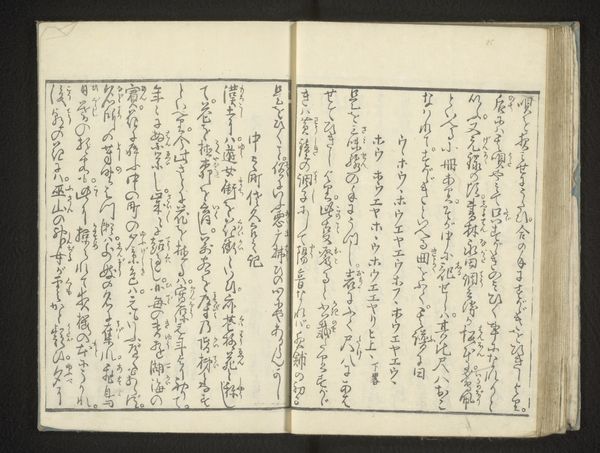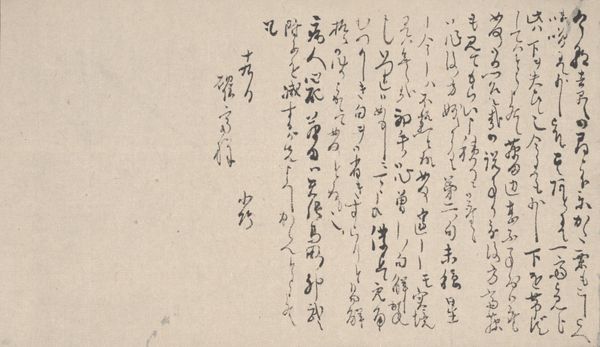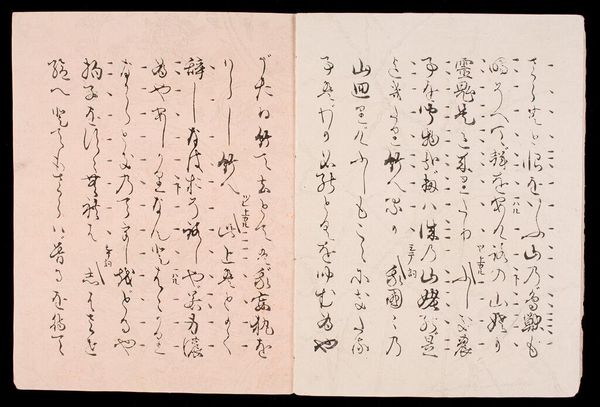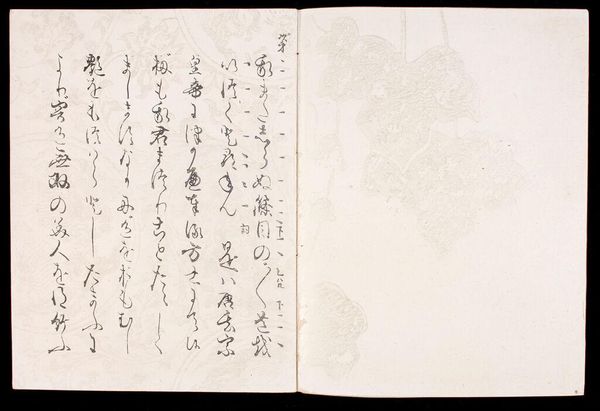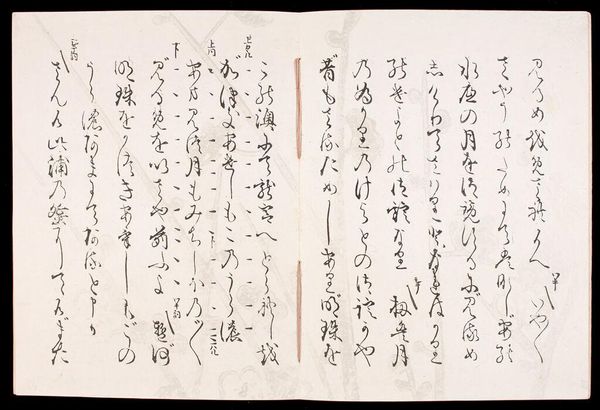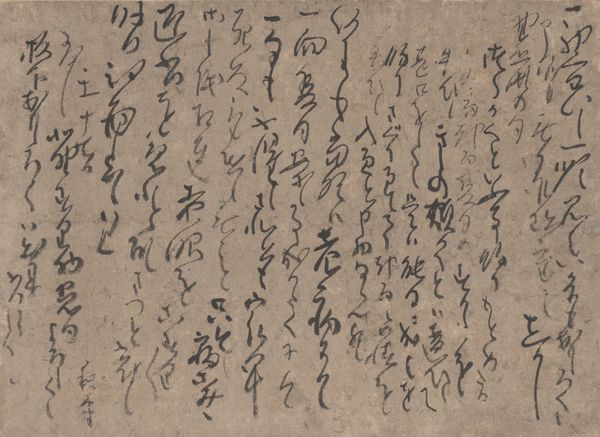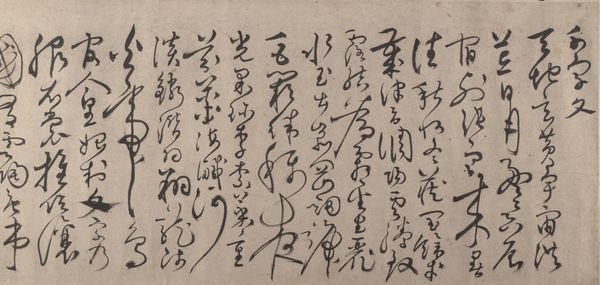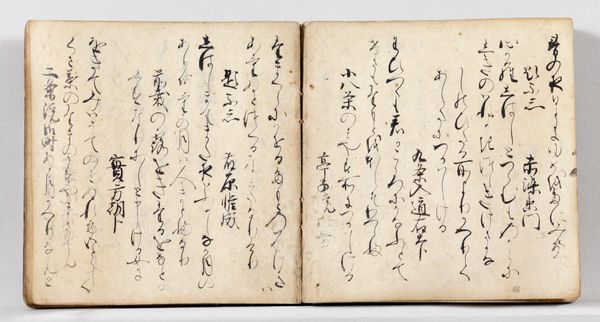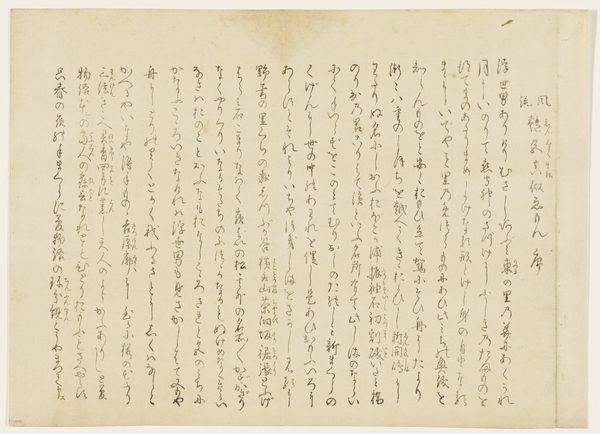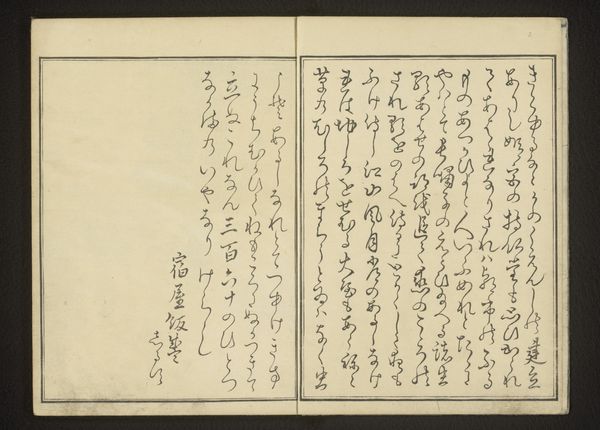
drawing, paper, ink
#
drawing
#
asian-art
#
japan
#
paper
#
ink
#
line
#
calligraphy
Dimensions: 4 7/8 × 3 1/2 × 1/2 in. (12.38 × 8.89 × 1.27 cm)
Copyright: Public Domain
Editor: So, this is *The Tale of Ise*, made by Fujiwara Sueari in 1662. It's ink on paper, and it almost looks like a handwritten book. I’m immediately struck by the density of the text and the flowing lines of the calligraphy. How do you interpret this work? Curator: Well, beyond just seeing elegant calligraphy, I think it’s critical to view this work as an artifact embedded within a rich socio-political context. The Tale of Ise itself is a collection of poems, each suggesting stories that would have resonated deeply with the aristocratic class of the time. Fujiwara’s work in transcribing this tale isn't just about aesthetics; it's about preserving and reaffirming cultural values. How does understanding the history of censorship, printing, and copying by hand alter how you see the object? Editor: That’s fascinating. I hadn’t considered it in the context of preservation and potentially resistance through the reproduction of the text. Curator: Exactly! During this time, cultural capital was power. The act of writing and illustrating such tales reaffirmed identities. Thinking about this work, who had access to literacy? And who controlled the narrative? Editor: It’s clear that access would have been extremely limited, mostly for elites...So in some ways, creating a manuscript like this could be seen as participating in the existing power structure. Curator: Or subtly reinforcing a shared culture against external pressures, reminding the elites of the core narratives, which, if we scrutinize them, reflect very gendered courtly power dynamics. Is it radical, or is it a quiet assertion? Does its aesthetic value obscure any other concerns for you? Editor: I see it differently now! The artistic value acts as a veil of cultural identity worth deconstructing. Thanks! Curator: Precisely. Recognizing the work as part of Japan's complex historical narrative adds a deeper resonance.
Comments
No comments
Be the first to comment and join the conversation on the ultimate creative platform.
